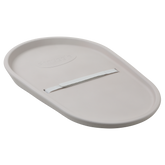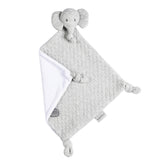Expecting parents are often curious about their baby's gender long before the official ultrasound can reveal it. While some turn to fun at-home gender predictors, others rely on more scientific methods. But how accurate are these various approaches? Let's dive into some of the most popular gender prediction methods, from ancient wives’ tales to medical tests.
1. The Ramzi Theory
The Ramzi theory suggests that the location of the placenta in early ultrasounds can predict your baby's gender. According to this method, if the placenta is forming on the right side of the uterus, it indicates a boy, while a left-side placement suggests a girl. This theory, however, is not scientifically proven and is considered more of a fun guess than an accurate prediction.
Accuracy: Limited scientific support.
2. Chinese Gender Predictor Chart
One of the oldest methods, the Chinese Gender Predictor chart, claims to determine the baby's gender based on the mother's age at conception and the month of conception. It’s rooted in traditional Chinese medicine, and though it’s fun to try, there's no scientific evidence backing its accuracy.
Accuracy: Around 50%—purely chance.
3. The Baking Soda Test
This at-home test is simple. Mix a tablespoon of baking soda with a sample of your urine. If it fizzes like soda, it’s said to indicate a boy. No fizzing supposedly points to a girl. This prediction method is based on the assumption that a mother’s urine pH changes based on the baby’s gender, but there’s no scientific proof behind this.
Accuracy: Just for fun! Not reliable.
4. Ultrasound (20-week Scan)
The most accurate and commonly used method to determine a baby’s gender is through an ultrasound, usually performed around 18-20 weeks into pregnancy. During this scan, a trained technician can often determine the baby’s sex based on the visible development of genitalia.
5. Noninvasive Prenatal Testing (NIPT)
If you're looking for a highly accurate gender prediction method, NIPT is one of the best. This test is done as early as 10 weeks and analyzes fetal DNA in the mother's blood to check for chromosomal abnormalities. As a bonus, it can reveal the baby's sex with 99% accuracy. It’s typically recommended for high-risk pregnancies but can be requested for gender identification purposes.
While many gender prediction methods are purely for fun, it’s important to rely on scientifically backed methods like ultrasound and NIPT if you want accurate results. Until then, trying out different predictors can add some excitement and curiosity to the journey!
Editor’s Picks
Shnuggle Baby Bath | Newborn baby bath Support with Bum Bump | Compact Bathtub for babies | Bath Seat Suitable from Birth
- From $59.95
- From $59.95
- (-0%)
- Unit price
- / per
Shnuggle Toddler Bath Tub | Big Bath for bigger kids | Child bathtub seat support | Fits in shower and adult bath
- From $79.95
- From $79.95
- (-0%)
- Unit price
- / per
Shnuggle Squishy Diaper Changing Mat | Wipeable | Hygienic | Safe
- $99.95
- $99.95
- (-0%)
- Unit price
- / per
Nattou Comforter Doudou Elephant Tembo
- $18.37
$24.50- $18.37
- (-25%)
- Unit price
- / per
Nattou Silicone Children’s Tableware Set 4-Piece with Non-Slip Suction Plate & Bowl
- $24.95
$34.95- $24.95
- (-29%)
- Unit price
- / per













